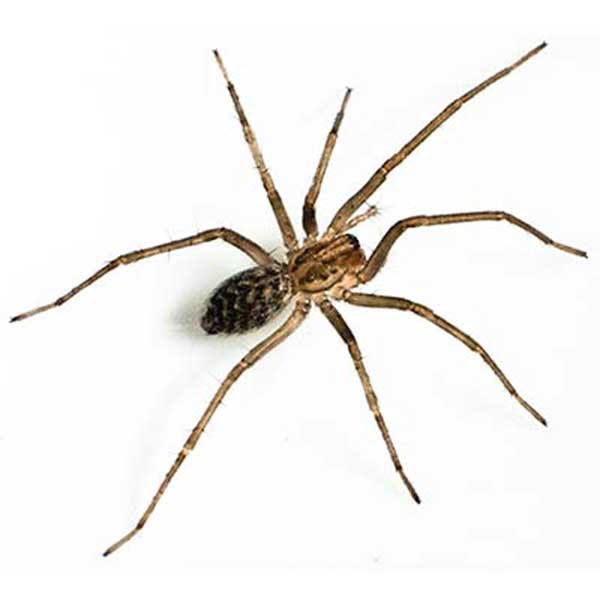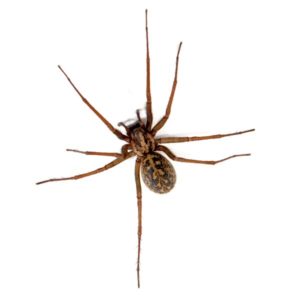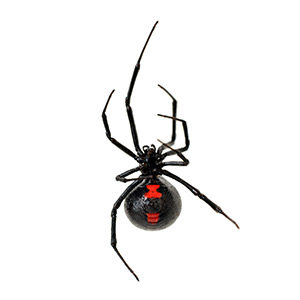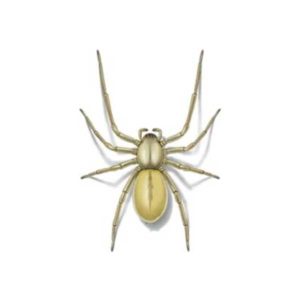Description
| Size | ¾” with 2” leg span |
| Characteristics | Large size; brown in color with black, grey, or dark brown pattern on back. |
| Legs | 8 |
| Habitat | Prefers to remain outdoors, but are often found in garages and basements. Tends to stay near ground level and may become trapped in sinks or bathtubs. |
| Habits |
|
| Gaint House Spiders in the Pacific North West | Giant house spiders are a large species that is frequently found throughout North America. These spiders are not toxic to humans and can even be beneficial by limiting the population of other pests such as mosquitoes, fleas, and ants. Giant house spiders are known for constructing large and funnel-shaped webs, particularly in tight corners or dark spaces. Though giant house spiders prefer to live outdoors, they may be carried into homes on boxes, firewood, or other belongings. |
| Gaint House Spider Habitat | Giant house spiders tend to live outdoors, and they often build their nests in protected areas such as firewood stacks or gaps between bricks and stones. If carried indoors, these spiders are drawn to dark and quiet areas such as basements and garages. Giant house spiders are not very good climbers, so they typically build their funnel-shaped nests close to the ground. Because these spiders struggle to climb, they may also become trapped in sinks and bathtubs while searching for water. |
| Gaint House Spider Behavior, Threats, and Dangers | Though they were once thought to be venomous, giant house spiders are actually antisocial arachnids with little to no toxicity. Despite their large size and frightening appearance, giant house spiders usually scurry away quickly if they sense a human presence. Their bites are rare and not serious to the average person, though individuals with specific allergies may experience a reaction. That said, an outbreak can be an unsightly problem for home and property owners throughout the Pacific Northwest. If you notice the signs of a giant house spider outbreak, call your local spider exterminators to remove the pests quickly! |




